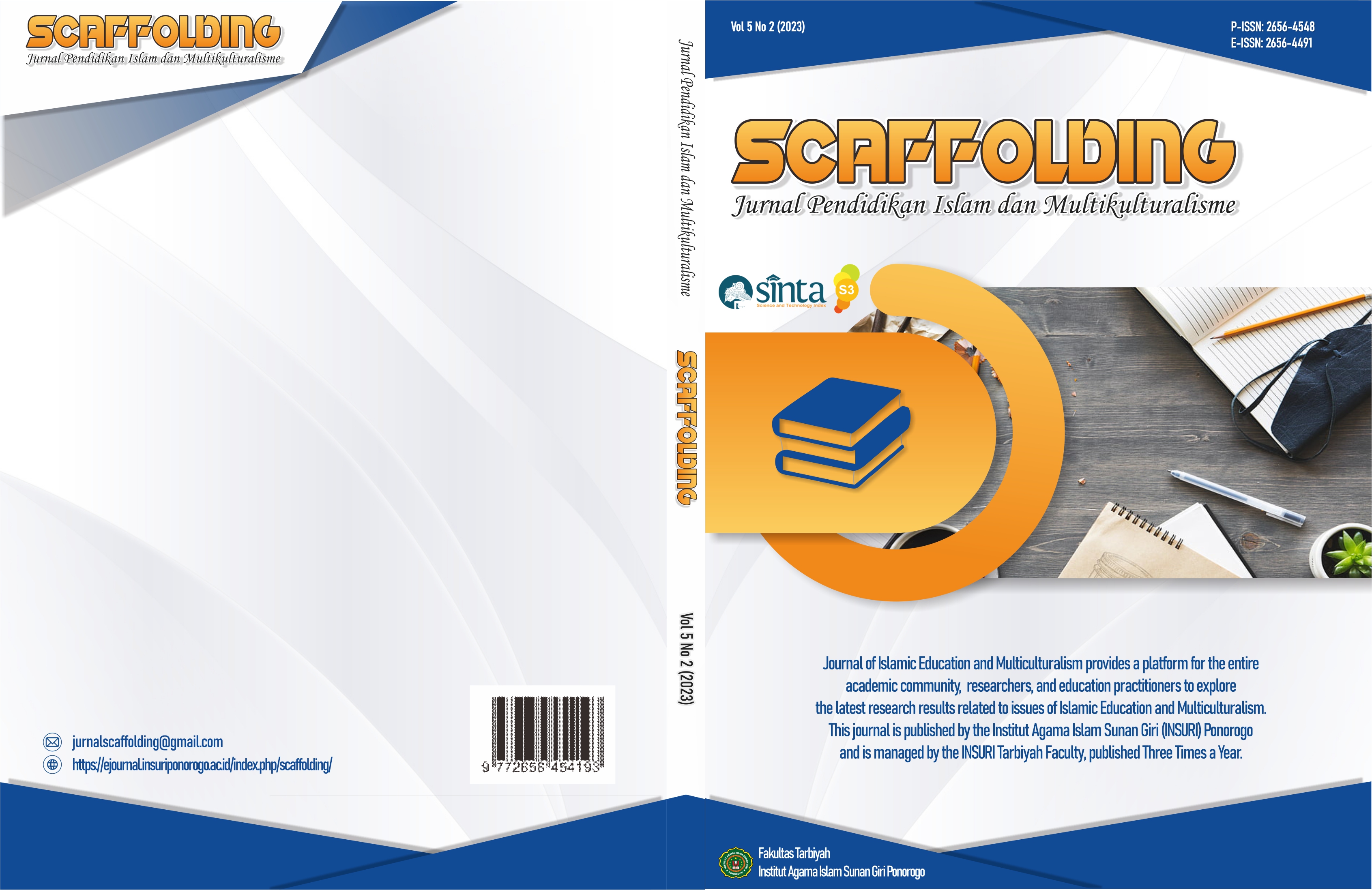Meaning and Actualization of Jihad For Students in State Life
DOI:
https://doi.org/10.37680/scaffolding.v5i2.2765Keywords:
Jihad; Meaning; State Life; STAI As-Sunnah Deli SerdangAbstract
This research is attracted by issues where there are various views on the broad meaning of jihad in a multicultural society and the emergence of extremist groups in interpreting and actualizing jihad as a result of these different views. The study aims to analyze the meaning actualization of jihad and in the life of the state according to STAI As-Sunnah Deli Serdang students, North Sumatra. This research is qualitative with a case study approach. Conducted at As-Sunnah Islamic High School Deli Serdang, North Sumatra. Data collection techniques are carried out by observation, interviews, and documentation. While data analysis is done through data reduction, data presentation, drawing conclusions, and verification. The results of the research show that regarding the law of jihad, students agree that the law of jihad is fardhu kifayah, namely an obligation that if a group of Muslims has carried it out, then the obligations of other Muslims fall. Even so, under certain conditions, the law of jihad can become fardhu 'ain, which is an obligation for every individual Muslim. These conditions are when the enemy has attacked when meeting the enemy, and when ordered by the legitimate leadership of the State. Student jihad in the life of the state can be carried out in all areas of life, for example, ideology, politics, economy, socio-culture, and defense and security.
Downloads
Published
How to Cite
Issue
Section
License
Authors who publish with this journal agree to the following terms:
Authors retain copyright and grant the journal right of first publication with the work simultaneously licensed under a Creative Commons Attribution-NonCommercial 4.0 International License that allows others to share the work with an acknowledgement of the work's authorship and initial publication in this journal.
Authors are able to enter into separate, additional contractual arrangements for the non-exclusive distribution of the journal's published version of the work (e.g., post it to an institutional repository or publish it in a book), with an acknowledgement of its initial publication in this journal.
Authors are permitted and encouraged to post their work online (e.g., in institutional repositories or on their website) prior to and during the submission process, as it can lead to productive exchanges, as well as earlier and greater citation of published work.



